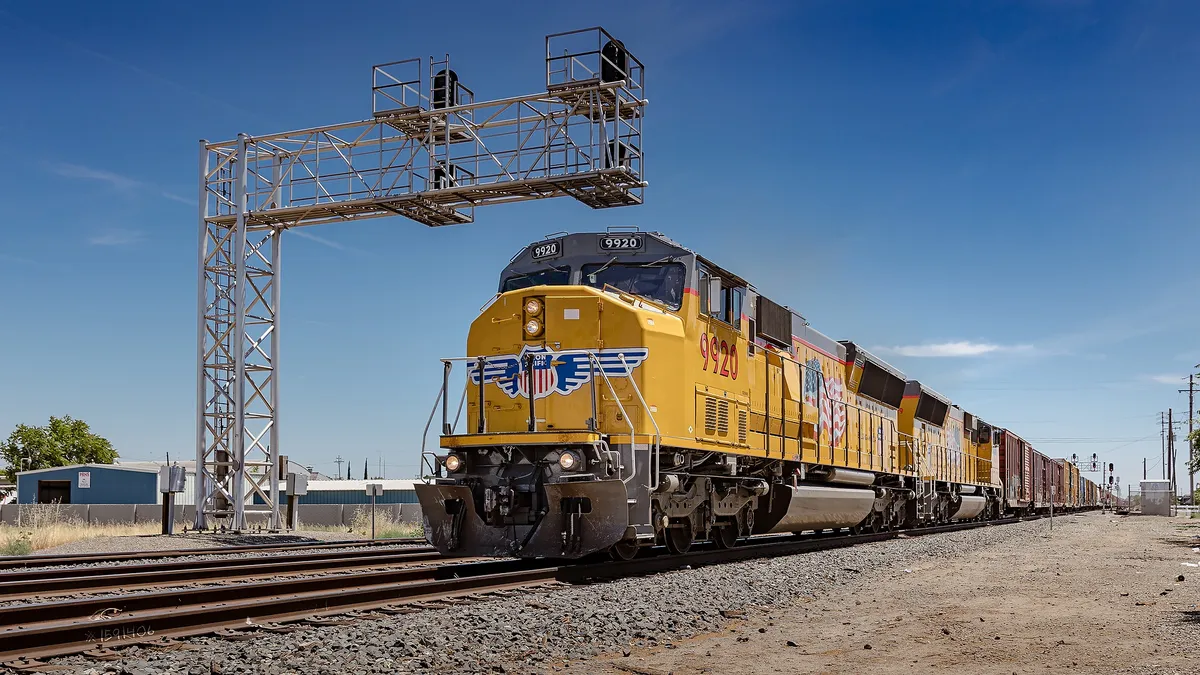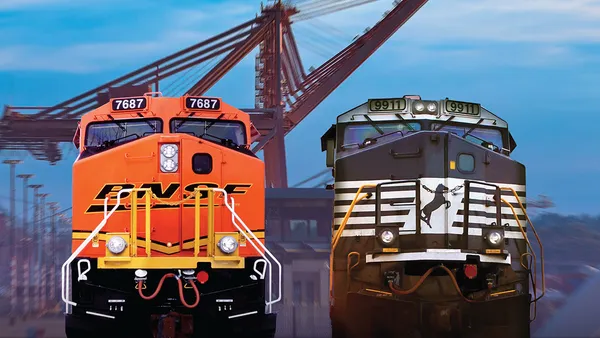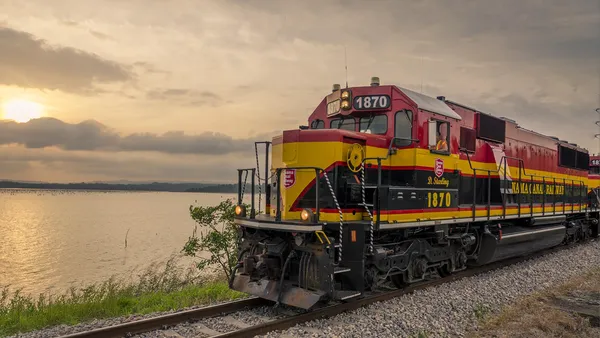Dive Brief:
- Union Pacific's intermodal trip plan compliance fell 4% YoY in Q3 as volume came back to the railroad nearly as quickly as it dropped in Q2, Chief Operating Officer Jim Vena said on a Thursday earnings call.
- "When we walked into the third quarter, the entire supply chain was constrained. It's not a rail issue," Kenny Rocker, executive vice president of marketing and sales, said on the call. "You got the terminals, you got the port, you got the dray carriers, everyone was constrained." Rocker said the company worked with customers as it experienced these issues.
- Total volume was down 4% in Q3 with industrial, minerals, coal and bulk freight each down double digits compared to the same period last year. Intermodal volume was up 5% YoY for the quarter. The railroad expects volume to be up in the low single digits in Q4 and down roughly 7% YoY for the full year, Rocker said.
Dive Insight:
Union Pacific continued to build longer trains to deal with the resurgence of intermodal freight. CEO Lance Fritz said the railroad has increased average train length 28% since beginning to introduce PSR principles in late 2018.
The railroad also leveraged rates and surcharges to "protect those customers that are with us year-round," and instituted new processes to reduce container and chassis dwell, Rocker said. Union Pacific boosted its digital visibility tools to keep shippers informed, he said, specifically highlighting its Intermodal Terminal Reservation System on the call.
Class I railroads have been working to convert intermodal business off of the highways for years, but a tight trucking market presents new opportunities according to rail executives. Intermodal volume was the bright spot for Kansas City Southern and CSX, which reported earnings within the last week, and all three are looking to convert shippers with lower rates and improved service, despite struggles with trip plan compliance to varying degrees in Q3.
Executives credited retail restocking with the intermodal spike. And Union Pacific is starting to target e-commerce volume for further growth as well — a "service-sensitive" class of shipper, according to Rocker.
"I believe that there is a structural change out there with the consumer preference that there's going to be more e-commerce there that fits very nicely with our service product," he said.
Precision-scheduled railroading has been fundamental to that service improvement, according to the railroad. And the company's leadership on that PSR work is about to change. Vena, Union Pacific's PSR guru, will transition out of the role of chief operating officer in early 2021 and leave the company entirely in June. Vena joined the railroad in 2019 after retiring from Canadian National. His replacement, Eric Gehringer, currently serves the railroad as senior vice president of transportation and has been with Union Pacific for 15 years.
The PSR work continues even as Vena plans his exit. Union Pacific closed one of two humps in its Nebraska yard in Q3 and is still in the process of consolidating its Chicago and Houston operations. Among other efficiencies, fewer humps require fewer people to work them.
Vena said his job was to build Union Pacific's PSR foundation and he's done that. "What's left? Well, locomotives are going to be way more productive. Our train length, I see 10,000 feet, okay? I see our car freight velocity up another 5% or 10%. So I think that we are just starting," said Vena.
When asked if he could join another railroad after Union Pacific, the COO said, "We're going to elect a President that's either 74 or 78. So, I'm still a young guy, and I'll leave it at that."














